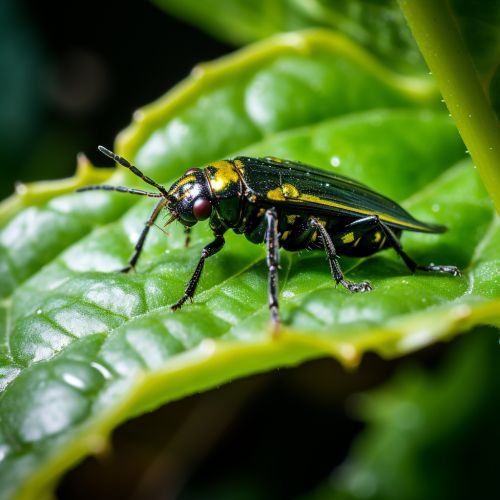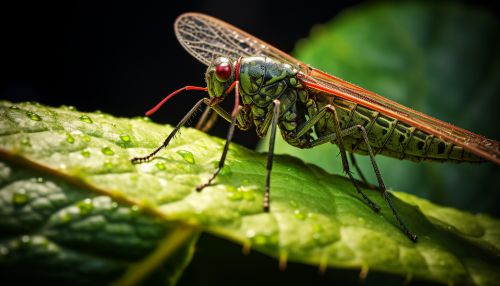The Science of Plant-Insect Herbivore Interactions
Introduction
The science of Plant-Insect Herbivore Interactions is a specialized field within the broader discipline of Ecology, focusing on the complex relationships between plants and the insects that feed on them. This area of study is critical for understanding the dynamics of ecosystems, as well as for practical applications in agriculture and pest management.


Plant Defenses Against Insect Herbivores
Plants have evolved a variety of defenses against insect herbivores, including physical barriers, chemical defenses, and indirect defenses.
Physical Barriers
Physical barriers, also known as structural defenses, include features such as thorns, spines, and tough leaves. These structures can deter insects from feeding on the plant, or make it more difficult for them to access the plant's tissues.
Chemical Defenses
Chemical defenses involve the production of compounds that are toxic or distasteful to insects. These compounds, known as secondary metabolites, can deter insects from feeding on the plant, or reduce their ability to digest the plant's tissues. Examples of secondary metabolites include Alkaloids, Terpenoids, and Phenolics.
Indirect Defenses
Indirect defenses involve the attraction of natural enemies of the insect herbivores, such as predators or parasitoids. These defenses can be mediated by volatile compounds released by the plant in response to herbivore attack, or by the provision of resources for the natural enemies.
Insect Adaptations to Plant Defenses
In response to plant defenses, insect herbivores have evolved a variety of adaptations that allow them to overcome these defenses. These adaptations can be behavioral, physiological, or genetic in nature.
Behavioral Adaptations
Behavioral adaptations include strategies such as feeding on parts of the plant that are less defended, or feeding at times when the plant's defenses are lower. Some insects have also evolved the ability to detect and avoid plants that have high levels of defensive compounds.
Physiological Adaptations
Physiological adaptations involve changes in the insect's body that allow it to tolerate or detoxify the plant's defensive compounds. These adaptations can include the production of enzymes that break down the defensive compounds, or changes in the insect's gut microbiota that help it to digest the plant's tissues.
Genetic Adaptations
Genetic adaptations involve changes in the insect's DNA that confer resistance to the plant's defenses. These changes can occur through mutation, or through the acquisition of resistance genes from other organisms.
Implications for Agriculture and Pest Management
Understanding the science of plant-insect herbivore interactions has important implications for agriculture and pest management. By understanding how plants defend themselves against insect herbivores, and how insects overcome these defenses, scientists can develop more effective strategies for managing pests and protecting crops.
Breeding for Resistance
One approach to pest management is to breed plants that have enhanced defenses against insect herbivores. This can involve selecting for plants that have high levels of defensive compounds, or that have physical structures that deter insect feeding.
Biological Control
Another approach is to use biological control, which involves the use of natural enemies of the insect pests to reduce their populations. This can involve the introduction of predators or parasitoids, or the enhancement of the plant's indirect defenses to attract these natural enemies.
